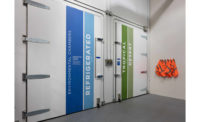
In trying times, people look for distractions. They might find relief in enjoying a classic film with family or they might dig into a big tub of ice cream pulled from the freezer. The movie world and the food world both provide an escape from everyday life.
So, it wasn’t much of a stretch to find a link between our annual State of the Industry issue and the American Film Institute’s “10 Top 10,” a listing of the top 10 movies in each of 10 film categories - including animation, science fiction, western, mystery, epic and sports (see www.afi.com).
Looking to stir up discussion, Los Angeles-based AFI surveyed more than 1,500 industry experts to compile the list. R&FF borrowed from this list to prepare its own category-by-category look. We hope that it similarly stirs up discussion about our industry, which is proving to be an economic bright spot - even as the U.S. is stuck in one of the worst recessions in recent history.
With convenience topping many attributes, frozen food rang up nearly $52 billion in U.S. retail sales through all channels in 2008, said Packaged Facts, New York. In an April 2009 release, the consumer market researcher noted that this figure represents a 6.5 percent increase from approximately $49 billion in sales during 2007.
“It’s no coincidence that some of the fastest-growing products in the frozen foods market benefit from having a convenience edge such as portability, being ready-to-eat or offering no-mess consumption and easy clean-up,” said Tatjana Meerman, Packaged Facts publisher. “Packaging formats cashing in on this angle include single-serve pouches, portionable packs and ‘servings for two.’”
Packaged Facts projects that retail sales of frozen food and beverages (through all channels) will reach almost $65 billion in 2013, an increase of more than 25 percent or $13 billion over 2008 revenues.
While many markets struggle with the sluggish economy, others thrive. Market researcher Mintel, Chicago, said it has reviewed and re-forecasted its research reports from the past two years, identifying which food and drink markets are actually being improved by recessionary woes. Among the top five categories: frozen meals and prepared side dishes. The others: breads, sweet spreads and coffee.
“Over the past year, we’ve seen people trying to save money on food by either dining out less, cutting supermarket bills or both. More people cook at home now but they still want healthy, convenient, tasty food and drink for their dollar,” said Bill Patterson, a Mintel senior analyst. “As consumers spend less and stay in more, certain food markets are benefitting. These recession-proof - or rather recession-fueled - industries are destined to do well throughout the economic downturn, but it will be interesting to track their sales as the nation recovers.”
Mintel noted, “Convenient, available in family-sized servings, filling and often inexpensive, frozen meals will undoubtedly benefit from the recession. Mintel expects a total sales increase of 4.5 percent, a jump from its original -0.3 percent expectation.”
Looking as well at side dishes, the firm said, “More people are cooking at home but small conveniences like ready-prepared side dishes aren’t out of the question for many families. Mintel only expected the side dish market to grow 2.3 percent in 2008, but in fact, it grew more than 5 percent, driven by increased sales of basic comfort foods such as mac and cheese.”
Editors’ note: In putting together our annual State of the Industry issue, R&FF editors tapped into the knowledge and expertise of a number of people representing a wide range of companies and associations. We regret that we do not have room to thank each person here. A special thank you goes out, however, to Chicago-based Information Resources Inc., which provided much of the retail sales data used in this year’s issue.

